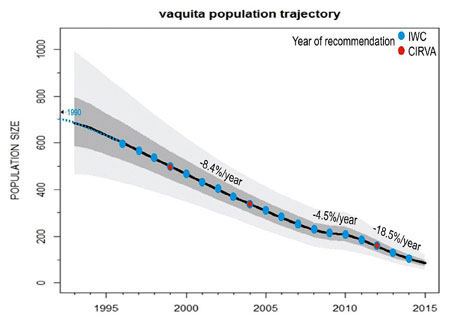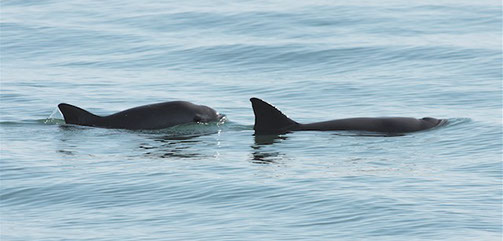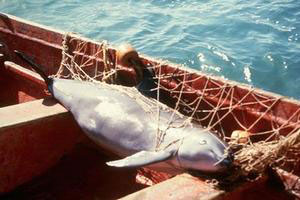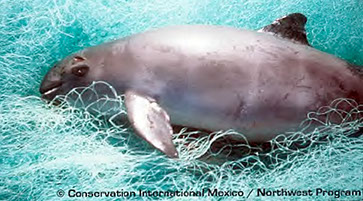The Vaquita Porpoise
The Vaquita Porpoise
The vaquita (Phocoena sinus) is a small porpoise (whales, dolphins, and porpoises are called cetaceans by scientists). It is one of only seven species of true porpoises, and is the only one that occurs in warm waters of the eastern Pacific Ocean. It is found in a tiny area in the extreme northern Gulf of California, near Baja California, Mexico. It is a unique species, with a body shape and color pattern unlike that of any other. It has a tall dorsal fin (for a porpoise) and a beautiful color pattern on the face, with dark eye rings and lip patches that look like an application of “goth” make-up. There is only one small population, and if the species goes extinct, it will be gone forever.
Vaquita Fast Facts
- The vaquita has only been known to science since 1958.
- Vaquita means “little cow” in Spanish.
- At about 5 feet (1.5 m) long, it’s the smallest species of cetacean.
- The vaquita lives only about a 4 hour drive from San Diego.
- Unlike other porpoises, vaquitas give birth only every other year.
- Newborns are born in the spring (March/April).
- They live to be only about 20-21 years old.
- Vaquitas have never been held in captivity.
- It is one of the rarest and most-endangered mammal species in the world.
- Its fate is tied to that of the upper Gulf of California ecosystem.
- The vaquita could go extinct in as little as two years if we do not act NOW.
The vaquita occupies a very limited range in the northern Gulf of California (Sea of Cortez), just south of the mouth of the Colorado River. It can be found just a short drive from San Diego and Tijuana.
Problems and Solutions
The vaquita has probably always been a rare species. But in the last couple of decades, the small population has plummeted by up to 50% per year, as illegal gillnets set for fish and shrimp kill more porpoises than are born. The gillnets trap vaquitas and they drown. The good news is that the size of the population may have stopped declining recently, and the current population is estimated at a bit more than 10-13 individuals. If rapid progress is not made, the vaquita will likely be extinct in a few short years. The very perilous situation of the vaquita has been recognized by the International Union for Conservation of Nature (IUCN), which lists it as Critically Endangered.
Can the Vaquita be Saved?
Yes, we think so! Unlike some endangered species that have no place left to live in the wild, the vaquita’s home in the Gulf of California is clean and healthy. The only real problem is the gillnets that entangle and kill vaquitas there. If the fishing practices can be modified to be ‘vaquita-safe’ in the small area where they live, the species will likely recover. However, gillnets need to be eliminated in the species’ range. With your help, we still have a small chance to save the vaquita!!





